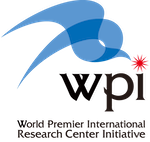Maxim Mostovoy (University of Groningen) Topological defects in chiral noncollinear antiferromagnets

Non-collinear antiferromagnets are a new spintronics playground: they show the Anomalous Hall, Nernst and Magnetic Spin Hall effects, allow for short switching times and are not hampered by demagnetizing fields. The order parameter describing the 120o-ordering of spins in isotropic antiferromagnets is SO(3) matrix, which allows for complex topological defects that do not exist in ferromagnetic materials, such as the Z2-vortex in a Heisenberg triangular antiferromagnet. [1] An interesting class of materials are magnets that are both frustrated and chiral, such as the swedenborgite, CaBaCo2Fe2O7, [2] and Fe-langasite, Ba3TaFe3Si24O14. [3] Geometric frustration and competing exchange interactions in these magnets make spins non-collinear at the scale of one crystallographic unit cell, and Dzyaloshinskii-Moriya interactions resulting from inversion symmetry breaking give rise to additional large-scale modulations and stabilize unconventional topological defects. Fe-langasite shows a non-collinear 120o-ordering of spins of Fe ions forming triangles, a spiral with a period of 7 lattice constants along the c axis and complex spin superstructures with the length scale of 2500 Å. I will discuss an effective model describing the long-distance magnetic modulations and nonsingular two- and three-dimensional topological defects: the coreless Z2-vortex and particle-like three-dimensional skyrmion, closely related to the Shankar monopole in 3He-A and hedgehog soliton in the Skyrme model of baryons. [4] I will also discuss the magnetoelectric coupling that can be used for the electric control of the topological defects. Compact magnetic particles that can propagate in all three spatial directions could play an important role in antiferromagnetic spintronics.
References:
[1] H. Kawamura and S. Miyashita, J. Phys. Soc. Jpn. 53, 4138 (1984).
[2] J. D. Reim et al., Phys. Rev. B 97, 144402 (2018).
[3] M. Ramakrishnan et al., npj Quantum Materials 4, 60 (2019).
[4] E. Barts and M. Mostovoy, npj Quantum Materials 6, 104 (2021).


